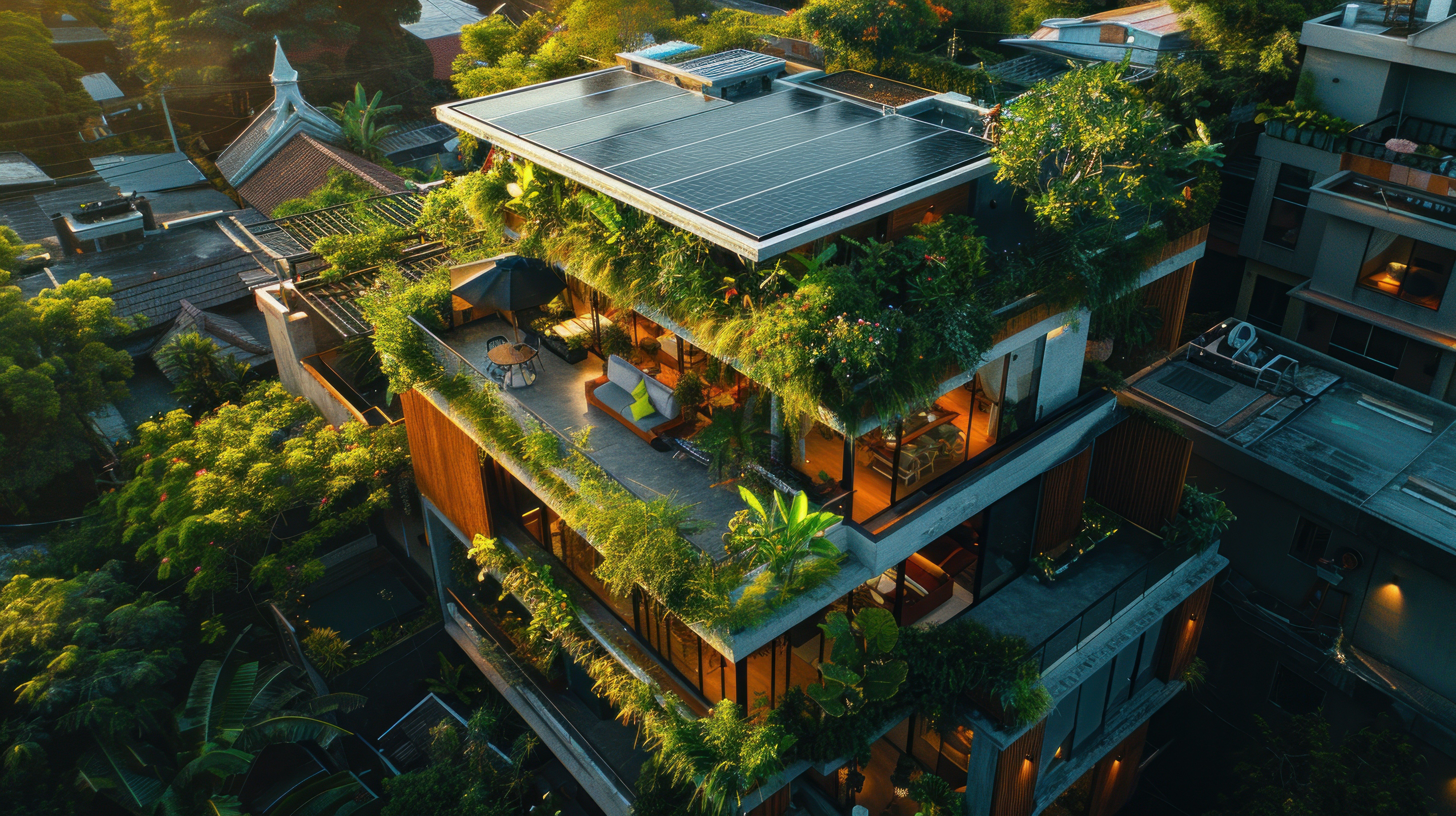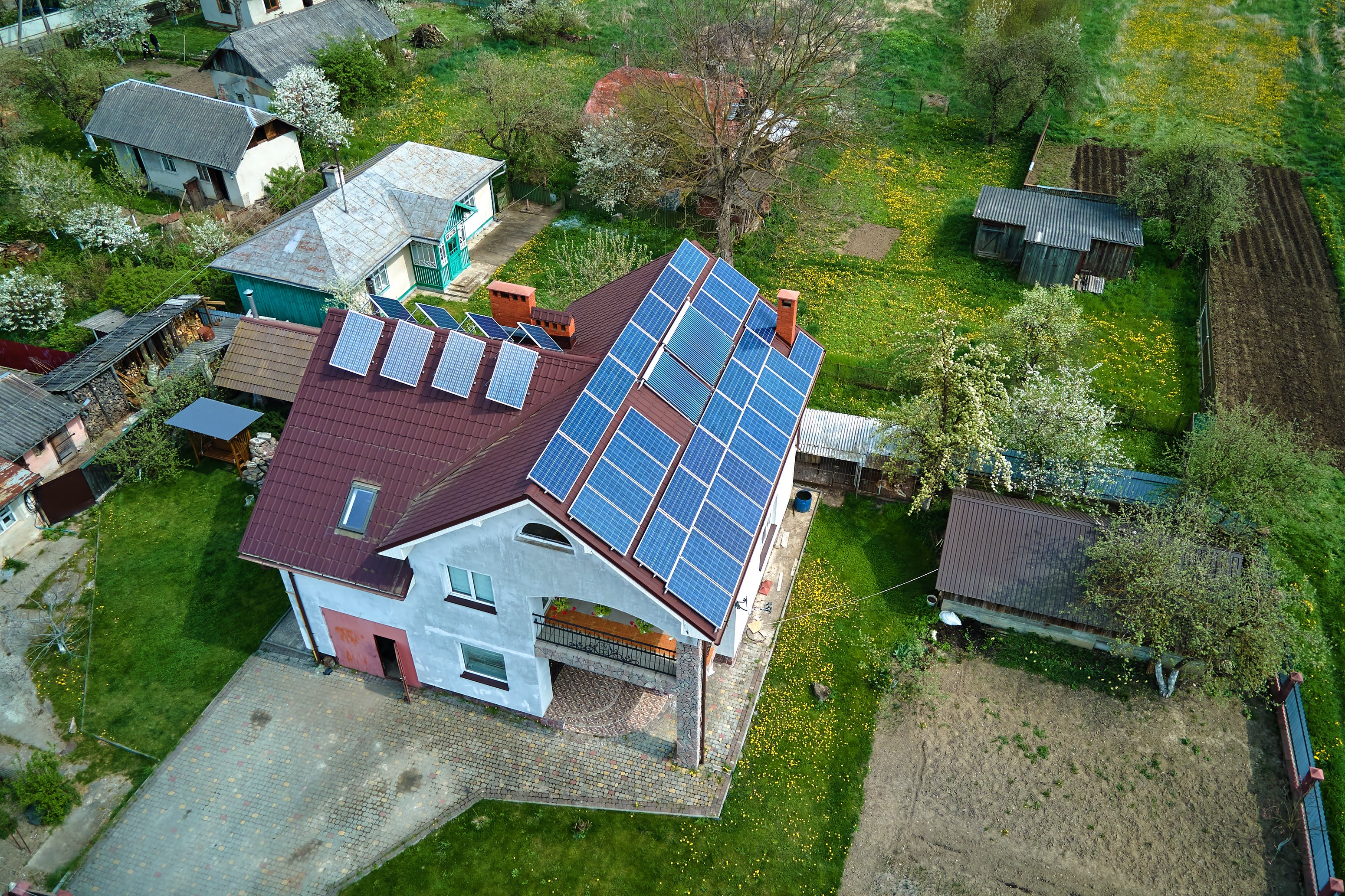Lew Geffen Sotheby's International Realty, a company with its finger on the pulse of all things architecture, puts the magnifying glass on regenerative design and all that it has to offer.
In this guide, you’ll discover:
The theory of regenerative design

Regenerative design is an approach to architecture that seeks to create systems and structures that not only protect but actually restore the ecological health of their environments. According to many experts, this approach is key to avoiding a dystopian future. While traditional design methods prioritise efficiency and functionality, regenerative design emphasises the interconnectedness of natural and human systems.
Building designs can be regenerative in a variety of ways. For example, a regenerative building may include rainwater harvesting facilities or incorporate green roofs. The materials used are all likely to have been sourced locally, which will ensure that they can be integrated into local ecosystems.
Another important aspect of regenerative design is its holistic perspective. It considers the social, economic and cultural dimensions of a project, aiming to create solutions that benefit both the environment and local communities. In an ideal scenario, this involves engaging stakeholders (from local businesses to tribal leaders in relevant areas) to ensure that the needs and values of people who live and work in the region are also taken into account.
It is not only architects who need to put regenerative principles into practice. Successful regenerative design projects require collaboration between architects, urban planners and product designers. Each discipline has the potential to innovate and create systems that meet people’s needs while also improving our planet’s health.
To summarise, regenerative design is about creating a mutualistic relationship between human needs and the natural environment. By prioritising regeneration rather than mere sustainability, it seeks to create an environmental balance that will create a better life for future generations.
The difference between sustainability and regenerative design

The idea of regenerative design is not new and the difference between sustainable and regenerative design was possibly best explained back in 2007 by Bill Reid, an internationally renowned planning consultant and design process facilitator. In a paper titled Shifting From ‘Sustainability’ to Regeneration, Reid explains that the idea of sustainability focuses on efficiency. “In other words,” he says, “the use of environmental rating systems and other mechanisms allows a reduction in the damage caused by excessive resource use.”
He goes on to explain that regenerative design is a more comprehensive, big-picture approach. “However, instead of doing less damage to the environment, it is necessary to learn how one can participate with the environment by using the health of ecological systems as a basis for design.”
In regenerative design, the role of architects and designers is to create networks of mutually beneficial relationships between nature and built environments. By doing so, we can design buildings that go further than sustaining the status quo and actually contribute to regenerating the health of our environment.
Under the regenerative design model, the design process should involve an ecologist or biologist who can advise on how to restore as much of the ecosystem around the built environment as possible. Architects need to strive to use materials that take carbon out of the atmosphere in order to be carbon positive rather than carbon neutral. A thorough understanding of how water moves through the site and how its benefits can be maximised is also required.
Another interesting concept that comes into play in regenerative design is biomimicry. Simply defined, biomimicry refers to designs and materials that use ideas from nature to solve problems. A great example provided by biomimicry.net is using nature’s chemical recipes to help us design sustainable forms of plastic. A further example is how natural ecosystems can teach us how to build a factory that functions like a forest.
The difference between sustainability and regenerative design can be summarised as the level of care taken. While sustainability attempts to limit the harm done to the environment, regenerative design focuses on creating buildings that are in harmony with the natural environment and actually provide environmental benefits.
The four principles of regenerative design

In an article penned for Buildings.com by Jennie Morton, a freelance writer specialising in commercial architecture, IoT and proptech, she lays out four principles of regenerative design. The first of these principles is that, as already discussed, regenerative design is more than sustainable design. The experts that Morton quotes all agree that the term “sustainability” needs to be added to. Sustainability refers to not taking more than needed and actively attempts to not damage the planet, regenerative design requires us to actively reverse the damage that’s being done to the planet.
The second principle is that regenerative design gives back. It replaces the old sustainability mantra of “recycle, reduce and reuse” with “restore, renew and replenish.” This means implementing architectural strategies that reverse air pollution, clean water and repair forests.
Thirdly, every design choice matters in regenerative design. Every aspect of building, from site research and material selection to engineering, must be approached holistically. In other words, every decision made, from the choice of ceiling tiles to the building’s orientation, has implications. Regenerative design is not superficial: it starts with a deep analysis of the site, its carbon cycles and biodiversity, among various other factors.
Lastly, regenerative design is about designing for the future. Colin Rohlfing, a director of sustainable development and one of the experts interviewed by Morton, points out that buildings must be adaptable for future resiliency. “We need projects that can be a steward for evolving metrics,” he comments.
How regenerative design saves power and water

With or without loadshedding, power saving needs to be a major priority, both now and in the future. Regenerative design looks at ways buildings can have power saving built into their DNA. Measures considered to be part of regenerative designs include high-performance insulation, energy-efficient Heating, Ventilation and Air Conditioning (HVAC) systems and renewable energy sources.
Buildings that are designed using regenerative design practices are naturally thermally efficient, which reduces energy consumption. In the surrounding landscape, measures like windbreaks can be incorporated to circumvent large temperature variations.
By integrating natural systems, regenerative designs can leverage natural energy flows, which drastically lowers the need for artificial heating and cooling. Examples of such systems include solar orientation, natural ventilation, green walls and green roofs. Over and above this, implementing smart grids and energy management systems allows for optimised energy use and demand response, which in turn reduces peak loads and saves power.
Various strategies can be implemented to save water in regenerative designs. Some of these ideas are nothing new, such as greywater recycling. This involves recycling water from sinks, showers and other sources to be used for irrigation or toilet flushing.
An innovative idea that has come to the fore is permeable surfaces. Experts have made great strides towards overcoming the impact of impervious surfaces, such as tarmac, concrete and paved roads, which prevent rainwater from seeping into the ground and thus prevent groundwater from being replenished in underground aquifers. Permeable surfaces provide a porous surface and consist of a permeable paving material placed atop a gravel bed, which acts as a reservoir. Water thus filters through, while pollutants are naturally removed. Options now available globally include permeable pavers, permeable asphalt, permeable concrete and grass paving, among various other options.
Soil health is another area of focus within regenerative design. Healthy soil is better able to retain water, which in turn reduces the need for supplemental irrigation. An article published by Farmer's Weekly explains that building soil health is key to regenerative farming efforts. It is achieved over time by implementing measures like "adding compost, planting cover crops and allowing livestock to graze crop residues as their manure stimulates microbe populations."
Common challenges and solutions in regenerative home design

High initial costs are possibly the most commonly cited challenge around regenerative design. The installation of renewable energy systems, water recycling infrastructure and green materials are higher than traditional designs. The flip side of the coin is that regenerative design often leads to lower long-term operational costs due to energy and water savings. This makes it a financially viable option over time. Some projects stagger regenerative elements over phases, allowing for more manageable financial outlays.
Setting up a regenerative design requires a holistic, systems-based approach that integrates diverse environmental factors. This naturally makes planning and coordination complex, but this can be overcome by bringing together architects, engineers, ecologists and community stakeholders early in the design process.
Regenerative systems, such as renewable energy technologies, green roofs and water recycling systems, require specialised maintenance. The good news is that smart technologies can be implemented to monitor energy, water and waste management systems, which simplifies maintenance.
Future trends in regenerative home design

Looking to the future, various regenerative design concepts seem set to rise to greater prominence. Regenerative design will align increasingly with the principles of the circular economy, which will lead to an increased focus on building deconstruction. Structures will be designed with the intention that, when no longer useful, they will be deconstructed rather than demolished. This means that components will be able to be reused, rather than going to waste and ending up in landfills. Construction materials will be increasingly made from recycled or upcycled materials. For example, industrial waste will be repurposed into building materials.
Biomimicry will be enhanced as designers continue to look to nature for inspiration. The efficiency and resilience of nature’s ecosystems will increasingly be used to create buildings and systems that are in tune with nature. One specific aspect of this is that climate-responsive architecture will rise to the fore. Structures will adapt dynamically to environmental changes, adjusting for variations in temperature, sunlight and humidity — much like plants and animals adapt to their ever-changing circumstances.
How regenerative design can inspire your next real estate investment

The concept of regenerative design can inspire your next real estate investment by giving you a goal to work towards. While it may be impractical to look for a deconstructable home complete with a green roof, permeable surfaces and renewable energy sources, you can look for homes that have been built with the environment in mind and which can be upgraded over time to be increasingly regenerative.
In the long term, properties with regenerative design elements are more resilient to possible environmental changes, such as water shortages, rising electricity costs and even extreme weather events. You can future-proof your investment by looking for properties with features like solar panels, drought-tolerant plants, water-recycling systems and green roofs. Such properties are also highly likely to become more valuable over time.
Your home should inspire you

The journey from sustainability to regenerative design involves a paradigm shift from “first do no harm” to “how can we repair harm”? The journey to finding the right home for your family may also seem challenging, but the team from Lew Geffen Sotheby’s International Realty is here to help. Get in touch and let’s find you the right piece of forward-thinking real estate.
Comments